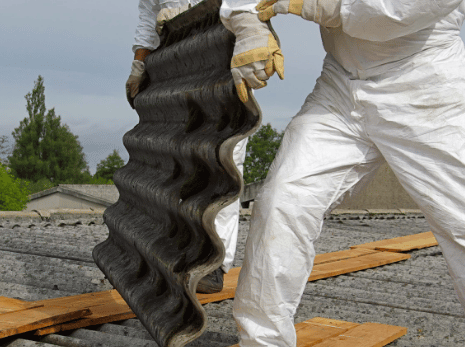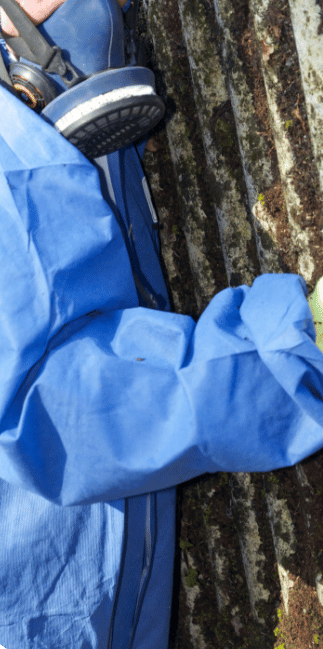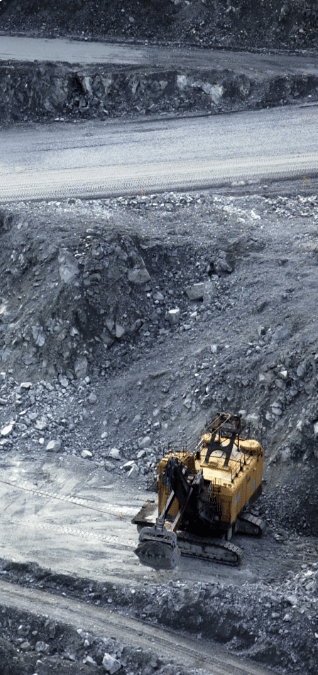Guide to Asbestos in the Home and Asbestos Removal
Before 1986, asbestos was widely used in the construction of residential homes. Common products made with asbestos included asphalt or cement roofing shingles, vinyl floor tiles, wall and ceiling insulation, and drywall. If a product is disturbed commercially (drilling or sanding) or naturally (earthquake or severe storm), it can release dangerous asbestos fibers.
Home » Leading National Mesothelioma Law Firm » Asbestos Exposure » Guide to Asbestos in the Home and Asbestos Removal
Asbestos is the name given to six silicate mineral fibers that occur naturally in the earth’s crust. It has been widely used in industry, residences and consumer products. The individual fibers are microscopic and can be seen only with an electron microscope.

Handling, damaging or disturbing asbestos can release these fibers into the air, where they can be inhaled. The human body is unable to absorb or dissolve these fibers, so they lodge deeply into the lungs, causing scar tissue and cancer cells to develop over a period of 10 to 40 or more years.
Exposure to asbestos is the only known cause of an aggressive and deadly cancer known as mesothelioma. Mesothelioma impacts the thin tissues surrounding the lungs or abdomen. Other conditions associated with asbestos exposure include lung cancer and asbestosis, a painful inflammatory condition that causes scarring of the lungs.
Why Was Asbestos Used in Homes?
- Fire and heat resistance
- Chemical inertia
- Non-conductivity to electricity
- Tensile strength
- Flexibility
- Water resistance
Often referred to as a miracle mineral, these virtually indestructible fibers have been widely used in home construction for insulation, fireproofing, soundproofing and much more. Asbestos is abundant and inexpensive. By the 1930s, it had become an important component of residential construction.
By the late 1930s, asbestos manufacturers were aware of the health hazards associated with asbestos exposure. However, many of those manufacturers actively concealed this information and continued mining and selling the hazardous product to industries throughout the world.
After the public became aware of its hazards, asbestos use in residential buildings was phased out by 1986 as manufacturers were allowed to use the existing supply.
Common Places to Find Asbestos in Homes and Buildings


Asbestos was used in more than 3,000 building products throughout most of the 20th century. The most common occurrences of residential asbestos in older homes built prior to 1986 are described below. All of these products can release dangerous asbestos fibers if they are sawed, sanded, drilled, cut, worn or otherwise damaged.
- Roofing shingles or siding made of asphalt or cement
- Asbestos blankets and tapes used to insulate steam pipes, hot water pipes, boilers and furnace ducts
- Floor tiles made of vinyl, asphalt and rubber, plus the adhesive used to install these products and the backing on vinyl sheet flooring
- Products used in conjunction with woodburning stoves, furnaces or coal stoves, including door gaskets, surrounding wall insulation and decorative elements such as fake embers in gas fireplaces
- Soundproofing and decorative material sprayed onto walls and ceilings, including popcorn ceilings, popular from the 1960s to the 1980s
- Acoustic ceiling tiles
- Construction compounds:
- Plaster
- Joint compounds
- Textured paint
- Adhesives
- Caulking
- Household products such as fireproof gloves, stove-top pads, ironing board covers, curtains and certain hairdryers. Many homeowners paid premium pricing for
asbestos curtains, which were marketed for their fire retardancy and sound dampening qualities. - Wallpaper manufactured before the 1980s, especially with a vinyl finish, and its corresponding adhesive
- Wall and ceiling insulation
- Transite asbestos furnace flues, which are lined with asbestos. These tend to deteriorate over time, flake apart and collapse. Throughout this process, asbestos can be back drafted into the home.
- Drywall, drywall mud and tapes
- Electrical panel housing
Vermiculite insulation was a popular form of insulation until 1990. Vermiculite itself is a harmless product, but from 1919 until 1985, more than 70 percent of the nation’s vermiculite was mined in Libby, Montana. This vermiculite was contaminated with asbestos. The mine was shut down in 1990 after the contamination was discovered, but it is possible some products were still sold.
Natural Disasters That Can Disrupt Asbestos In Your Home
While the EPA has established laws governing the destruction of buildings that contain asbestos, no law can prevent natural disasters from damaging or destroying your home.

Floods
Floods can cause water damage to walls and floors, causing some materials to expand or break, disturbing any asbestos present therein.

Earthquakes
Earthquakes cause cracks and damage that disturb even the most well-contained asbestos. Some damage may not be apparent, so it is important to have your home inspected for asbestos contamination right away after an earthquake, especially if it is an older home.
In cases of complete destruction of the home, an extensive process by a professional asbestos abatement company will be necessary.

Hurricanes
The aftermath of a hurricane is devastating and often widespread. Most hurricane victims find themselves in survival mode while struggling to meet basic needs, especially if the damage is extensive.
Concerns about an invisible air particulate may not seem like a priority, but the possibility of disturbed asbestos deserves consideration due to the long-term devastating health consequences.
Damaged homes that contain asbestos are hazardous for families retrieving possessions as well as clean-up crews.

Wildfires
Wildfires and house fires have the potential to disturb asbestos, even if it has been professionally contained. The asbestos can be released into the air quickly and inhaled with the smoke.
Asbestos-containing products inside the home can continue releasing asbestos fibers long after the fire is extinguished. Immediate remediation may be necessary.

Tornadoes
Tornadoes can damage asbestos-containing roof shingles and siding when flying objects and debris or strong winds impact the home. This is true even if the tornado does not directly impact your house.
In cases of direct impact, any asbestos in the home, even professionally enclosed asbestos, can become friable and hazardous.

Severe Thunderstorms
Even thunderstorms have the potential to disturb asbestos that may be contained in your home. Trees or branches can fall on asbestos-laden roof shingles or damage the siding.
Lightning strikes could damage electrical components containing asbestos or cause attic fires that disturb insulation or other asbestos-containing products.
What to Do If You Suspect Asbestos In Your Home
Although most uses of asbestos were banned in 1978, asbestos can occur in houses built during the 1980s, 1990s and later. Instances of asbestos contamination have been found in common compounds used in construction and home repair as late as 2007. Asbestos is also still legally used in products that enclose the asbestos, such as vinyl floor tiles, cement pipe and asphalt roofing. If you encounter any product you believe is asbestos, do not touch it or disturb the surrounding structures, as this could release it into the air. The substance should be examined only by a testing professional.
Asbestos Testing
Asbestos testing is used to rule out or confirm the presence of asbestos and, if present, whether the asbestos is hazardous. It becomes hazardous when it is disturbed or damaged. Crumbly or easily torn asbestos, also known as friable asbestos, is always hazardous if it is not enclosed. However, well-maintained, intact asbestos does not release fibers into the air and is therefore not considered a threat to human health.
Asbestos testing is the only way to confirm the presence of asbestos. Asbestos removal companies require testing prior to removal.
- A visual examination
- Careful collection of samples
- Lab analysis of the samples
- A written evaluation of the findings
- A list of recommendations
If the asbestos is found to be well-contained and intact, the recommendation will most likely be to leave it in place. However, some homeowners prefer to take further action for peace of mind. If you decide to move forward with this process, never attempt it yourself. Always hire a professional abatement contractor.
Asbestos Repair
Asbestos repair is the process of containing asbestos without removing it. It is less extreme and safer than removal. The following methods are available:
Encapsulation
Asbestos materials are coated in a sealant that locks in the fibers to ensure that they do not become airborne.
Enclosure
Asbestos materials are wrapped or covered in airtight material to prevent the release of the fibers.
Hiring an Asbestos Removal Company
The selection of an asbestos abatement company is arguably the most important decision you will make when removing asbestos. One misstep by the company could jeopardize your health as well as the health of your family and anyone who enters your home. It is important to extensively research the abatement companies in your area and verify their credentials.
The following best practices will ensure you hire a company you can trust:
- Learn about the local, state and federal laws regulating asbestos removal procedures.
- When hiring an inspector, choose a company that does not also offer asbestos removal services, so there is no conflict of interest.
- Request documentation from the company that verifies its completion of required training.
- Verify that each individual performing the work is separately accredited.
- Sign a contract and ensure it specifies the work plan, cleanup and applicable laws and regulations.
- Ensure the contractor follows practices that prevent the spread or tracking of asbestos into other areas of your home.
- Ask the contractor specific questions about removal methods, such as the use of wet methods, decontamination, cleaning of the area, HEPA filtration and proper disposal.
- Ask for references, and if possible, ask former customers about the quality of the work of any company you are considering.
- Contact your state asbestos agency with any questions you have about required training, accreditation or licensing.
What Not to Do With Asbestos
- DO NOT panic. Undisturbed asbestos in good repair is usually safe.
- DO NOT allow children or pets to access any area where asbestos could easily be disturbed
- DO NOT sweep or vacuum debris that contains asbestos. Asbestos-containing debris should be wet mopped or vacuumed by a professional using special equipment.
- DO NOT saw, sand, scrape or drill holes into asbestos-containing materials.
- DO NOT strip, sand or use abrasive equipment on flooring materials that contain asbestos.
- DO NOT walk through asbestos debris.
- DO NOT attempt to remove asbestos yourself.
Asbestos Removal
Asbestos removal is considered an extreme course of action. It is usually recommended only when asbestos is causing a hazard or at risk of causing a hazard that cannot otherwise be safely contained. It requires an evacuation of the area and, possibly, of the home for the duration of the process.
Abatement professionals must wear personal protective equipment, which includes suits and respirators. The abatement procedure is performed as follows:
- The work area is tightly sealed to prevent the release of fibers.
- The contractor uses hand tools and wet methods to carefully remove the asbestos.
- Asbestos materials are placed in double plastic bags that are six mm thick.
- HEPA filters and equipment are used to clean the air.
- In-progress inspections are performed.
- The work area is cleaned with HEPA vacuums and wiped down.
- A decontamination chamber that includes a shower will be established and utilized while leaving the work area.
- The area is retested to confirm the air is free of asbestos fibers.
- The plastic sheeting is removed and the area is re-cleaned using the HEPA filter.
- Asbestos materials are properly marked and placed in a sealed dumpster at an approved asbestos disposal site. A DTSC (Department of Toxic Substance Control) certificate is required.
Asbestos can be recycled at approved facilities. Recycled asbestos can be converted to various silicate glass products that no longer contain the harmful mineral.
Costs
While it may be tempting to remove the asbestos yourself to avoid the cost of abatement, incorrect removal of asbestos is much more costly when you consider the deadly toll of asbestos-related illnesses like mesothelioma.
The investment in proper asbestos remediation will protect your health and buy you peace of mind for a lifetime.
